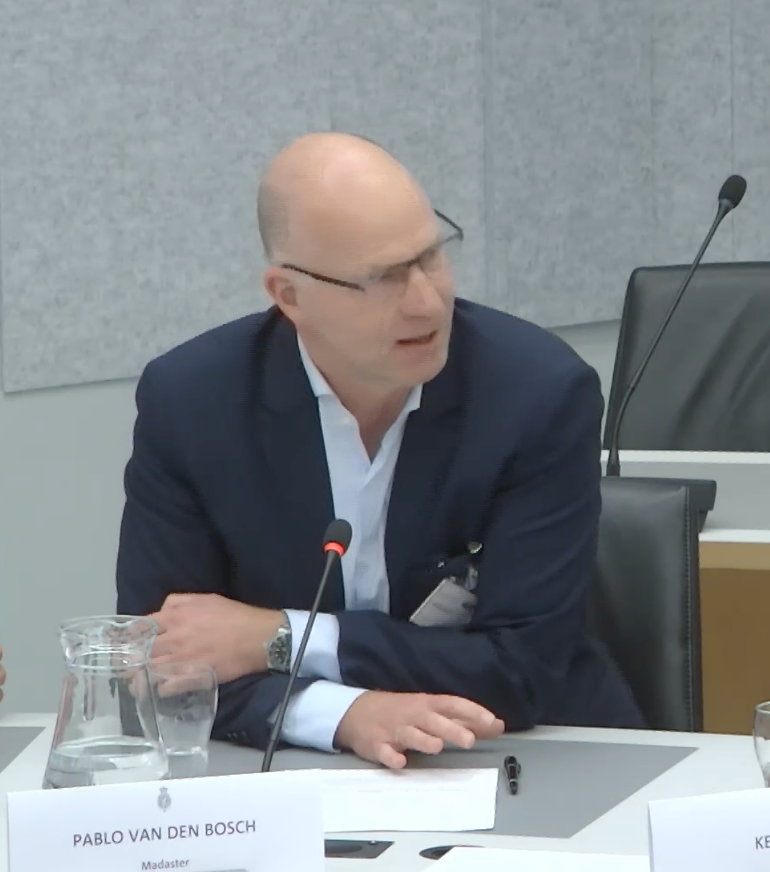IS THE CONSTRUCTION SECTOR READY FOR CIRCULAR ECONOMY TECHNOLOGY?
Author: Pablo van den Bosch, Board Member Madaster Foundation
Trade fairs, magazines and journals, blogs, LinkedIn, seminars…. the construction sector is paying full attention to circularity—a fact that cannot be ignored by construction professionals. The to-do lists of builders, design teams and developers all feature new concepts, such as the ability to be dismantled; rapid renewability, material passports and ‘materials as a service’. But is the construction sector truly ready for this transition, and is that circular economy with its fancy technology in line with the methods used in this sector?
For today’s society, transitioning towards a circular economy is a must, and smart professionals will be able to effectively implement the required changes. Such a transition, however, does not suggest the ride will be smooth. Many clichés apply: things will be difficult, people will feel the pinch, some efforts will be for naught, new paths will need to be followed and even complete U-turns will need to be taken. And disruptors will amaze the market with the unexpectedly rapid growth of their role within a sector that is as old as society itself.
TO INNOVATE IS TO CALIBRATE AND COLLABORATE
Prototypes rarely come onto the market. They unavoidable first require any number of adjustments. This is true for new technology, but of course also for the collaboration between those involved. The construction sector, in addition, is also characterised by an enormous network of stakeholders, who are also collaborating at different moments and over very long periods of time. This calls for a large degree of adaptation and calibration, with a healthy encouragement through trial and error by front runners, but without losing sight of standardisation and security. Thus, the motto should be one of collaboration.
COURAGEOUS BALANCING ACT
The construction sector is ever more clearly embracing the principles and possibilities of the circular economy. This is founded on knowledge about the materials used (‘material without identity is waste’), taking the origins of the materials into account as well as their future use (lifecycle analysis (LCA)), and involves digital registration of the applied constructions, materials and products (in Building Information Models (BIMs) and material passports).
The question is how far this should be taken? Is it a black-and-white situation (doing something 100% or not at all), does the pareto principle apply (the 80-20 rule), or should we give the transition time to develop and is ‘involvement’ more important than producing ‘immediate results’? And, above all, make sure that aiming for the ‘best’ does not become the ‘enemy of the good’. After all, we are well aware of the fact that we are not at the end of development; on the contrary, we are at the beginning—and there are no guarantees. This is why courage is needed in applying new techniques and concepts, knowing that there are no best practices, yet.
MADASTER PRACTICAL EXAMPLE 1
Thomas Rau talks about ‘registration rather than amortisation’. The Madaster Platform assumes the use of BIM; however, certain characteristics of constructions, materials and products are often not being registered in BIM models. Moreover, in practice, levels of detail may differ substantially between BIM models, due to the amount of time it takes to document such information. The platform currently assumes full and detailed registration of an object, but this is not fully in line with reality. Therefore, Madaster is working on implementation on multiple levels; if large amounts of information are available, a higher level of registration can be selected—and if the available information is only limited, a lower level may be chosen.
Reasons for the latter may vary; for instance, because the object is an existing building, or because it is still in the designing phase and many construction decisions have not yet been made, or when there is simply not enough time for a full registration. Both levels are acceptable, and knowing the difference between them means users of the information will know beforehand what level of detail to expect.
STRATEGIC CHOICES AND MANY QUESTIONS ABOUT DATA
Acceptation and use of BIM models are, of course, crucial factors in the digitisation of the construction sector, but equally important are robotisation and sensors. Digitisation both requires and generates large amounts of data and the linking of data sources. The network thus created is growing rapidly, calling for appropriate supervision and requires many strategic choices. Will we be copying data between sources, do we want to be dependent on others, where do the commercial interests lie, and what about privacy and security? These are prudent questions, and the need to make choices is becoming increasingly more explicit. For example, when answering incoming questions from customers who are looking for clarity about registration in digital twins, material passports, and ownership of materials at the end of a building’s lifetime. This is a positive development!
MADASTER MAKES EXPLICIT CHOICES
Madaster is busy exploring to the same degree as the construction sector. The enormous developments in the network of data, platforms and applications are taking place at lightning speed, but creating automatic links between a BIM model and various product databases is still a challenge, in practice. In addition to the challenge of converting new developments into concrete value for the sector, and the transition towards the circular economy, Madaster has explicitly chosen to provide a data source for the entire sector. A source where data can be stored and that provides the option of linking data sets (LinkedData), as well as one with strict rules about privacy and security and database rights (the right to generate new data using algorithms), at the not-for-profit foundation. And a source where data on individual objects remain the property of the object’s owner. Data owners are the only ones who can make their data available to others, but generic data that cannot be traced back to individual owners will be available to everyone. In this respect, Madaster aims to make a positive change, simply by making a start and entering into dialogue with the market. These explicit choices also raise questions, certainly while digitisation is still under development and functionality often precedes daily practice. Madaster welcomes such questions, which lead to an open dialogue about the necessary development within the sector, in order for digitisation to facilitate the transition towards a circular economy.
READY FOR THE FUTURE?
The construction sector is, of course, ready for the future. Indeed, it could boost the so needed transition—how’s that for being ready for the future! This does call for courage and embracing uncertainty, because we have only just begun discovering the possibilities and impossibilities of digitisation.
OBSERVATIONS ABOUT THE DIGITAL TRANSITION OF THE CONSTRUCTION SECTOR
- STIMULATE TRIAL & ERROR AND DO NOT LOSE SIGHT OF STANDARDISATION AND GUARANTEES.
- JOIN IN, WITH COURAGE, IS MORE IMPORTANT THAN STRIVING FOR PERFECTION.
- USE INNOVATIVE APPLICATIONS TO ALIGN WITH THE VARIOUS LEVELS OF AMBITION AND FEASIBILITY.
- STRATEGIC CHOICES ABOUT DATA AND DIGITISATION ARE A MUST.
- OPEN DIALOGUE WILL ENHANCE THE SECTOR’S INNOVATIVE LEVERAGE.



